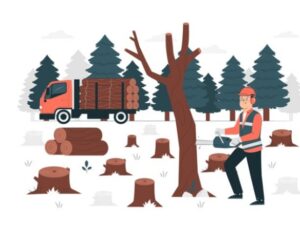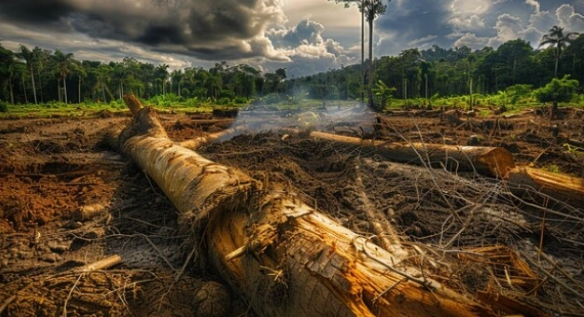 What is Deforestation?
What is Deforestation?
Deforestation poses a severe threat to global biodiversity. Forests provide essential habitats for countless species and making their loss critical. Each year, it destroys millions of trees and impacting ecosystems profoundly. This loss reduces the ability of forests to absorb carbon dioxide and worsening climate change. It also disrupts water cycles, leading to increased flooding and droughts. Moreover, it forces wildlife to migrate or face extinction. Communities relying on forests for resources and livelihood face economic hardships. Addressing deforestation requires concerted global efforts and sustainable practices. Reforestation and responsible land management can mitigate these impacts. Policies supporting forest conservation are essential to preserving our planet’s health. Governments and organizations must work together to halt it and restore degraded lands. So the future of our environment depends on the actions we take today.
 Causes of Deforestation
Causes of Deforestation
Deforestation stems from several key causes. Agricultural expansion drives large-scale tree clearing to make room for crops and livestock. Logging activities also contribute, as companies harvest trees for timber and paper products. Urbanization further accelerates it and with cities expanding into forested areas. Infrastructure development, such as roads and buildings, requires clearing large swaths of forest. Additionally, mining operations destroy forests to access valuable minerals. Climate change exacerbates the problem by altering ecosystems and increasing the likelihood of fires. These combined factors lead to the loss of vital forest habitats, impacting biodiversity and ecological balance. Addressing these causes is crucial for sustainable forest management and environmental preservation. Understanding and mitigating these drivers can help protect remaining forests and restore damaged ecosystems.
 Effects of Deforestation
Effects of Deforestation
Deforestation significantly impacts our environment, disrupting ecosystems and wildlife habitats. Trees absorb carbon dioxide, and their loss increases greenhouse gases. The effect of it extends to soil quality, as trees prevent erosion. Without trees, soil becomes more prone to degradation and runoff. Deforestation also affects local weather patterns by altering humidity and temperature. The loss of forests reduces biodiversity, threatening numerous species with extinction. Communities that depend on forests for resources face economic hardships due to deforestation. Furthermore, deforestation accelerates climate change, leading to more extreme weather events. Addressing the effect of deforestation requires urgent action, such as reforestation and sustainable land management practices. By protecting existing forests and restoring damaged ones, we can mitigate these negative impacts and support a healthier planet for future generations.
 Addressing the Issue
Addressing the Issue
Efforts to combat deforestation have become increasingly important in recent years. Conservation initiatives aim to protect existing forests and restore damaged areas. Sustainable forestry practices are encouraged to minimize the environmental impact of logging. Reforestation and afforestation projects are being implemented to replace lost trees and expand forest cover. So international agreements and policies are also being developed to address the global nature of it.
 Conclusion
Conclusion
In conclusion, deforestation is a critical environmental issue with wide-ranging effects. It is important to understand the causes, such as agriculture, logging, and development, as well as the impacts on biodiversity, climate, and local communities. Addressing deforestation requires a multifaceted approach, including conservation efforts, sustainable practices, and international cooperation. So the preservation and restoration of forests are vital for maintaining ecological balance and supporting life on Earth.

1 thought on “Deforestation”